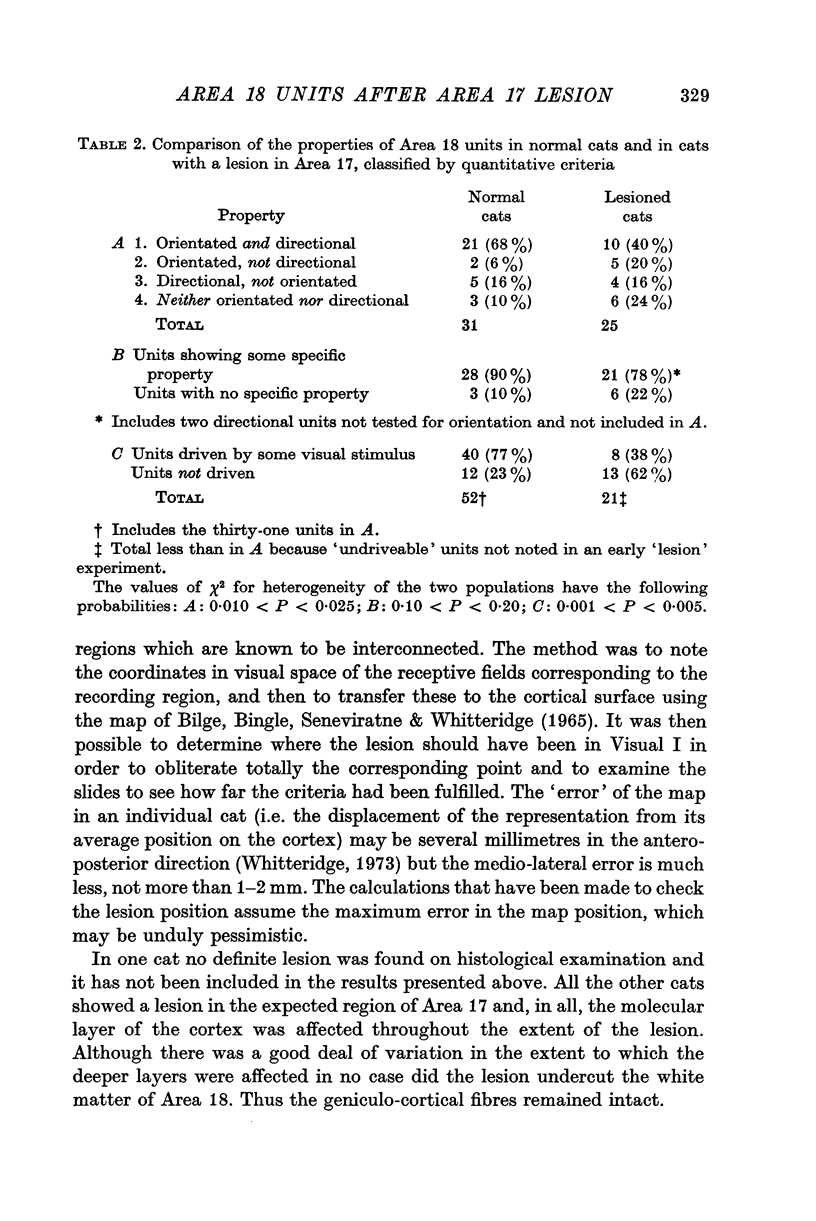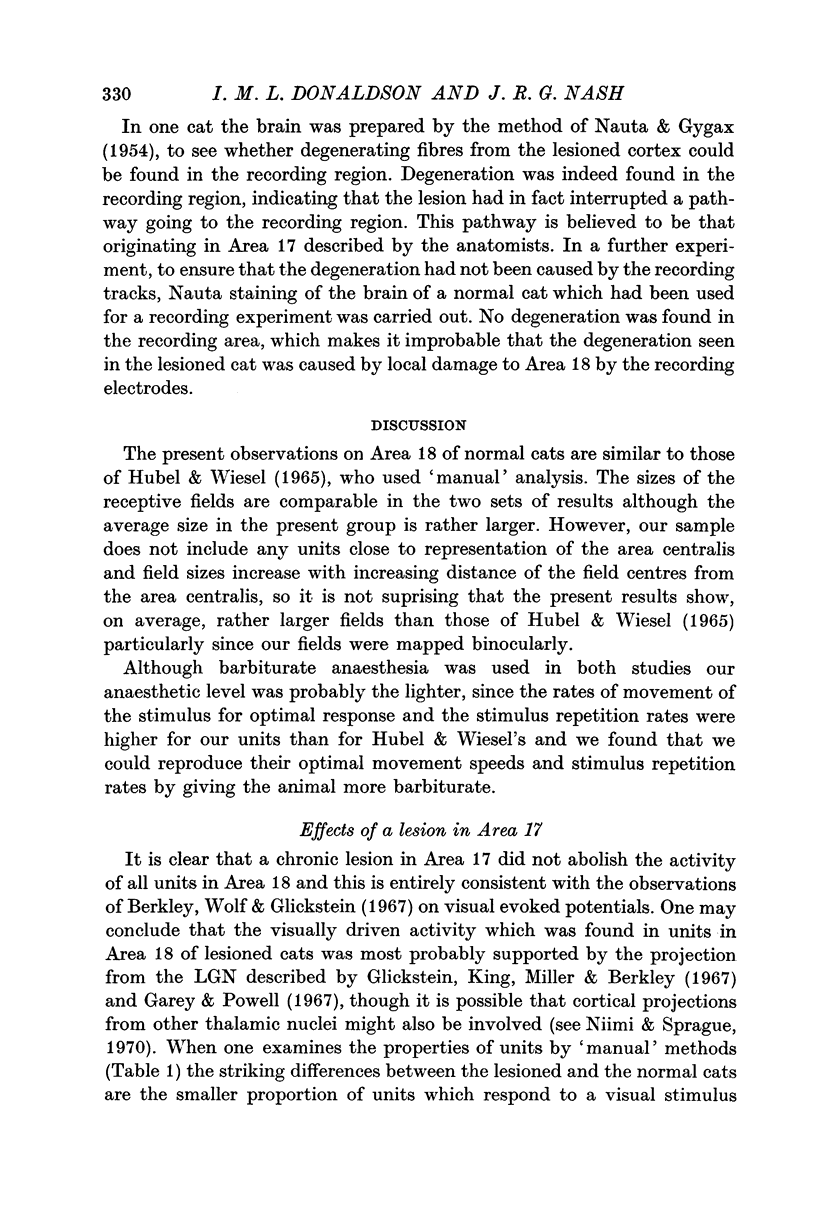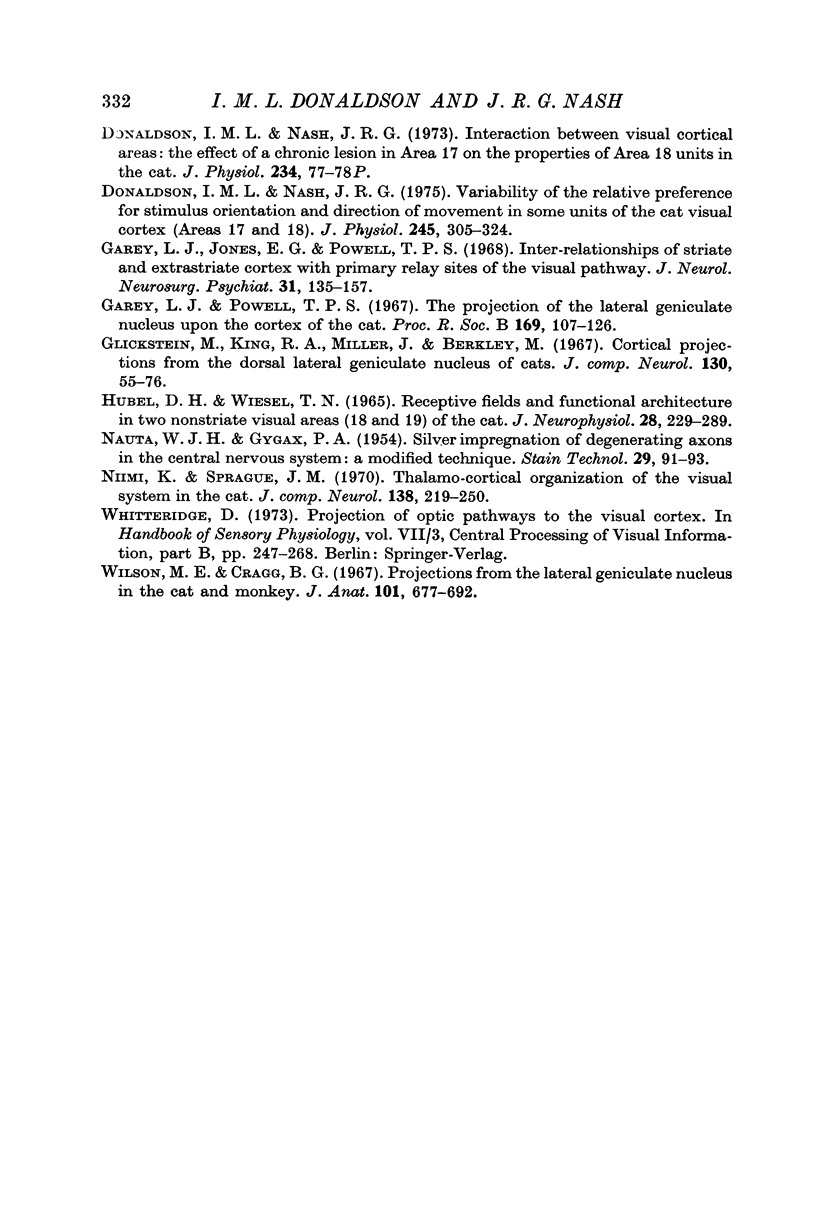Abstract
1. Lesions were made in cortical Area 17 (Visual I) of eight cats which were then allowed to recover. 2. During acute experiments between 1 and 11 weeks after the lesion the activity of Area 18 (Visual II) units was recorded and the results were compared with those obtained in normal cats. 3. The receptive fields were similar in size and distribution in the two groups but the lesioned animals had a much higher proportion of units unaffected by a visual stimulus and a higher proportion of the visually responsive units lacked specific direction or orientation preference. 4. Of six units which were tested in Area 18 of cats with lesions five showed variability of their direction or orientation preference with time. 5. The effects described above are most probably due to destruction of the corticocortical pathway which connects Areas 17 and 18. Some units in Area 18 appear to be driven by visual stimuli via their geniculate input alone. The corticocortical (Area 17 to 18) pathway may normally confer additional specificity on some of these units.
Full text
PDF







Selected References
These references are in PubMed. This may not be the complete list of references from this article.
- Berkley M., Wolf E., Glickstein M. Photic evoked potentials in the cat: evidence for a direct geniculate input to visual II. Exp Neurol. 1967 Oct;19(2):188–198. doi: 10.1016/0014-4886(67)90017-9. [DOI] [PubMed] [Google Scholar]
- Bilge M., Bingle A., Seneviratne K. N., Whitteridge D. A map of the visual cortex in the cat. J Physiol. 1967 Jul;191(2):116P–118P. [PubMed] [Google Scholar]
- Donaldson I. M., Nash J. R. Proceedings: Interaction between visual cortical areas: the effect of a chronic lesion in area 17 on the properties of area 18 units in the cat. J Physiol. 1973 Oct;234(2):77P–78P. [PubMed] [Google Scholar]
- Donaldson I. M., Nash J. R. Variability of the relative preference for stimulus orientation and direction of movement in some units of the cat visual cortex (areas 17 and 18). J Physiol. 1975 Feb;245(2):305–324. doi: 10.1113/jphysiol.1975.sp010847. [DOI] [PMC free article] [PubMed] [Google Scholar]
- Garey L. J., Jones E. G., Powell T. P. Interrelationships of striate and extrastriate cortex with the primary relay sites of the visual pathway. J Neurol Neurosurg Psychiatry. 1968 Apr;31(2):135–157. doi: 10.1136/jnnp.31.2.135. [DOI] [PMC free article] [PubMed] [Google Scholar]
- Glickstein M., King R. A., Miller J., Berkley M. Cortical projections from the dorsal lateral geniculate nucleus of cats. J Comp Neurol. 1967 May;130(1):55–75. doi: 10.1002/cne.901300104. [DOI] [PubMed] [Google Scholar]
- HUBEL D. H., WIESEL T. N. RECEPTIVE FIELDS AND FUNCTIONAL ARCHITECTURE IN TWO NONSTRIATE VISUAL AREAS (18 AND 19) OF THE CAT. J Neurophysiol. 1965 Mar;28:229–289. doi: 10.1152/jn.1965.28.2.229. [DOI] [PubMed] [Google Scholar]
- NAUTA W. J., GYGAX P. A. Silver impregnation of degenerating axons in the central nervous system: a modified technic. Stain Technol. 1954 Mar;29(2):91–93. doi: 10.3109/10520295409115448. [DOI] [PubMed] [Google Scholar]
- Niimi K., Sprague J. M. Thalamo-cortical organization of the visual system in the cat. J Comp Neurol. 1970 Feb;138(2):219–250. doi: 10.1002/cne.901380208. [DOI] [PubMed] [Google Scholar]
- Wilson M. E., Cragg B. G. Projections from the lateral geniculate nucleus in the cat and monkey. J Anat. 1967 Sep;101(Pt 4):677–692. [PMC free article] [PubMed] [Google Scholar]


